
Emballonuridae is a family of microbats, many of which are referred to as sac-winged or sheath-tailed bats. They are widely distributed in tropical and subtropical regions around the world. The earliest fossil records are from the Eocene.
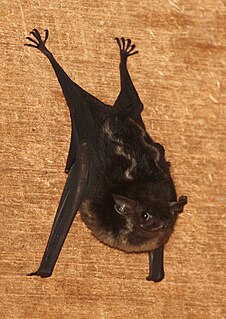
The greater sac-winged bat is a bat of the family Emballonuridae native to Central and South America.
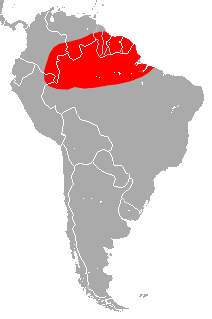
The lesser ghost bat is a bat species found in South America. It is one of six bat species worldwide to have white fur.
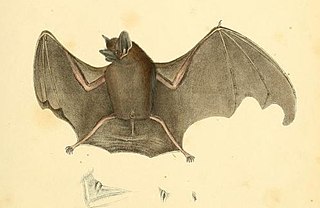
The lesser dog-like bat, also known as Peters' sac-winged bat, is a species of bat from South and Central America. First described in 1826, it was renamed in 1843 because the original scientific name was already in use for another species.

The lesser sac-winged bat or lesser white-lined bat is a bat species of the family Emballonuridae from South and Middle America.
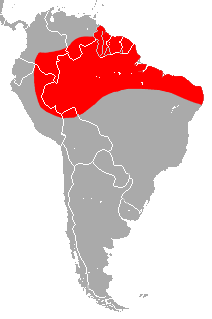
The white-winged dog-like bat is a bat species from South America. It is found in northern Brazil, southeastern Colombia, Ecuador, French Guiana, Guyana, eastern Peru, Surinam and Venezuela.

Diclidurus is a genus of bats whose common name is the ghost bats. Diclidurus all inhabit tropical South America, and D. albus is also found in Mexico and Central America. The fur of these insectivorous bats is white, sometimes with a slight greyish tinge, except D. isabella, which is partially pale brown. The only other all-white bat in the New World is the Honduran white bat, but it is easily distinguished from Diclidurus by its relatively large nose leaf. Diclidurus are poorly known and only infrequently captured, at least in part because they fly high above the ground or in the forest canopy.
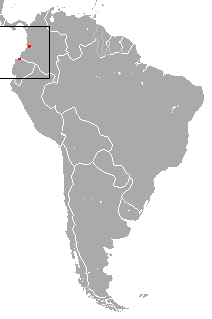
The Ecuadorian sac-winged bat is a species of sac-winged bat in the family Emballonuridae. It is found in Colombia and Ecuador. According to the IUCN Red List of Threatened Species, the population trend is decreasing for this species, due to habitat destruction through deforestation. In 2013, Bat Conservation International listed this species as one of the 35 species of its worldwide priority list of conservation.

The small Asian sheath-tailed bat is a species of sac-winged bat in the family Emballonuridae. It is found in Borneo, Sulawesi, and the Philippines.

Emballonura is a genus of sac-winged bats in the family Emballonuridae. It contains these species:
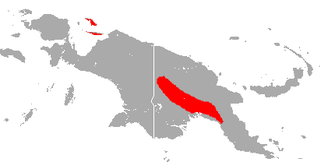
The greater sheath-tailed bat or New Guinea sheath-tailed bat is a species of sac-winged bat in the family Emballonuridae. It is endemic to New Guinea and some nearby islands. It is threatened by habitat loss.

The lesser sheath-tailed bat is a species of sac-winged bat in the family Emballonuridae. It is found in the Malay Peninsula, Borneo, and many other parts of the Indonesian Archipelago. It is locally threatened by habitat loss.

Raffray's sheath-tailed bat is a species of sac-winged bat in the family Emballonuridae. It is found in eastern Indonesia, Papua New Guinea, and Solomon Islands.

Saccolaimus is a genus of the family Emballonuridae, small insectivorous bats with distinctive sheathtails and pouches at the wrist.

The Papuan sheath-tailed bat is a species of bat in the family Emballonuridae which occurs at the Cape York Peninsula and New Guinea. The poorly known species hunts in open forests for night flying insects.

Hill's sheath-tailed bat is a bat of the family Emballonuridae. They are found in the deserts of central Australia.
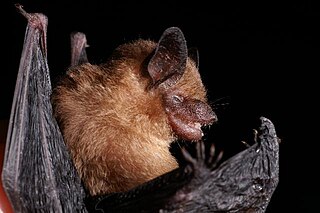
Rhogeessa is a genus of bats within the vesper bats family, Vespertilionidae.

The Antioquian sac-winged bat is a species of bat in the family Emballonuridae found in Colombia.
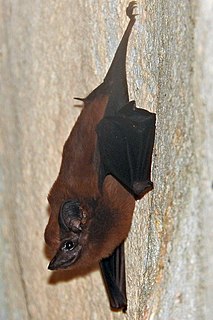
The Trinidad dog-like bat is a species of bat from the family Emballonuridae. It is native to Aruba, French Guiana, Grenada, Trinidad and Tobago, and Venezuela. The bat is considered to be rare everywhere in its geographic range, although this may be untrue, as the Trinidad dog-like bat was previously confused with the lesser dog-like bat. It is an aerial insectivore that roosts in hollow trees, hollow rotten logs on the ground, under overhanging banks, and caves in the Llanos of Venezuela.


















